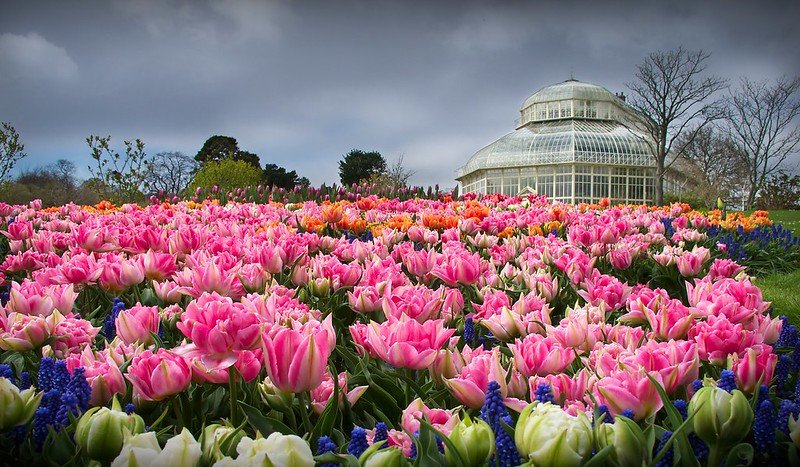Best Self-Guided Tours for Botanical Gardens
Exploring botanical gardens through self-guided tours offers a wonderful opportunity to immerse yourself in the beauty of nature, discover diverse plant species, and learn about conservation efforts. Here’s a guide to some of the best botanical gardens around the world where you can enjoy self-guided tours at your own pace.
1. Royal Botanic Gardens, Kew, London
Explore themed gardens, such as the Palm House and Waterlily House, which showcase tropical and aquatic plants. Enjoy self-guided walking tours through landscaped grounds, arboretums, and iconic glasshouses.

2. Singapore Botanic Gardens
Located in the heart of Singapore, the Botanic Gardens is a lush oasis featuring a wide array of tropical flora. Wander through the National Orchid Garden, home to over 1,000 species of orchids, and explore themed sections like the Healing Garden and Ginger Garden. Self-guided tours allow visitors to admire the garden’s beauty and learn about its rich botanical heritage.
3. Jardim Botânico, Rio de Janeiro
The Jardim Botânico in Rio de Janeiro is one of Brazil’s most iconic botanical gardens, dating back to 1808. Explore over 6,500 species of plants, including towering imperial palm trees and vibrant bromeliads. Self-guided tours offer insights into the garden’s history, biodiversity, and architectural landmarks like the Crystal Palace.
4. Huntington Botanical Gardens, California, USA
Nestled in San Marino, California, the Huntington Botanical Gardens span 120 acres and feature a stunning collection of rare plants and gardens. Explore themed gardens such as the Desert Garden, Japanese Garden, and Rose Garden. Self-guided tours allow visitors to appreciate the garden’s diversity and serene landscapes.
5. Kirstenbosch National Botanical Garden, South Africa
Wander through diverse gardens, including the Centenary Tree Canopy Walkway and the Fragrance Garden. Self-guided tours offer opportunities to learn about South Africa’s indigenous plants and conservation efforts.
6. Keukenhof Gardens, Netherlands
Keukenhof Gardens is famous for its stunning displays of tulips and spring flowers, attracting visitors from around the world. Explore themed gardens, pavilions showcasing floral arrangements, and over 7 million flower bulbs in bloom. Self-guided tours during the spring season allow visitors to marvel at colourful landscapes and intricate floral designs.
7. Botanical Garden of Curitiba, Brazil
Stroll through themed gardens, water features, and sculptures surrounded by native and exotic plants. Self-guided tours provide insights into the garden’s architecture and cultural significance.
8. Botanic Gardens, Dublin
Located in the heart of Dublin, Ireland, the National Botanic Gardens is a haven for plant enthusiasts and researchers. Explore glasshouses housing tropical plants, orchids, and carnivorous species. Self-guided tours offer a glimpse into Ireland’s botanical heritage and ongoing conservation efforts.
9. Kanapaha Botanical Gardens, Florida, USA
Kanapaha Botanical Gardens in Gainesville, Florida, features 24 major collections and stunning landscapes spread across 68 acres. Wander through bamboo gardens, cycad circle, and the largest herb garden in the Southeast. Self-guided tours allow visitors to explore at their own pace and enjoy seasonal blooms.
10. Adelaide Botanic Garden, Australia
The Adelaide Botanic Garden is a tranquil retreat in South Australia, featuring themed gardens, glasshouses, and a Victorian palm house. Explore the Australian Native Garden and the Bicentennial Conservatory housing rainforest species. Self-guided tours offer a glimpse into Australia’s diverse flora and botanical conservation efforts.
Conclusion
Exploring botanical gardens through self-guided tours allows you to appreciate the diversity of plant life, experience serene landscapes, and learn about botanical conservation. Whether you’re exploring iconic gardens like Kew in London or discovering hidden gems like Kanapaha in Florida, each garden offers a unique journey into the world of plants and nature.



















